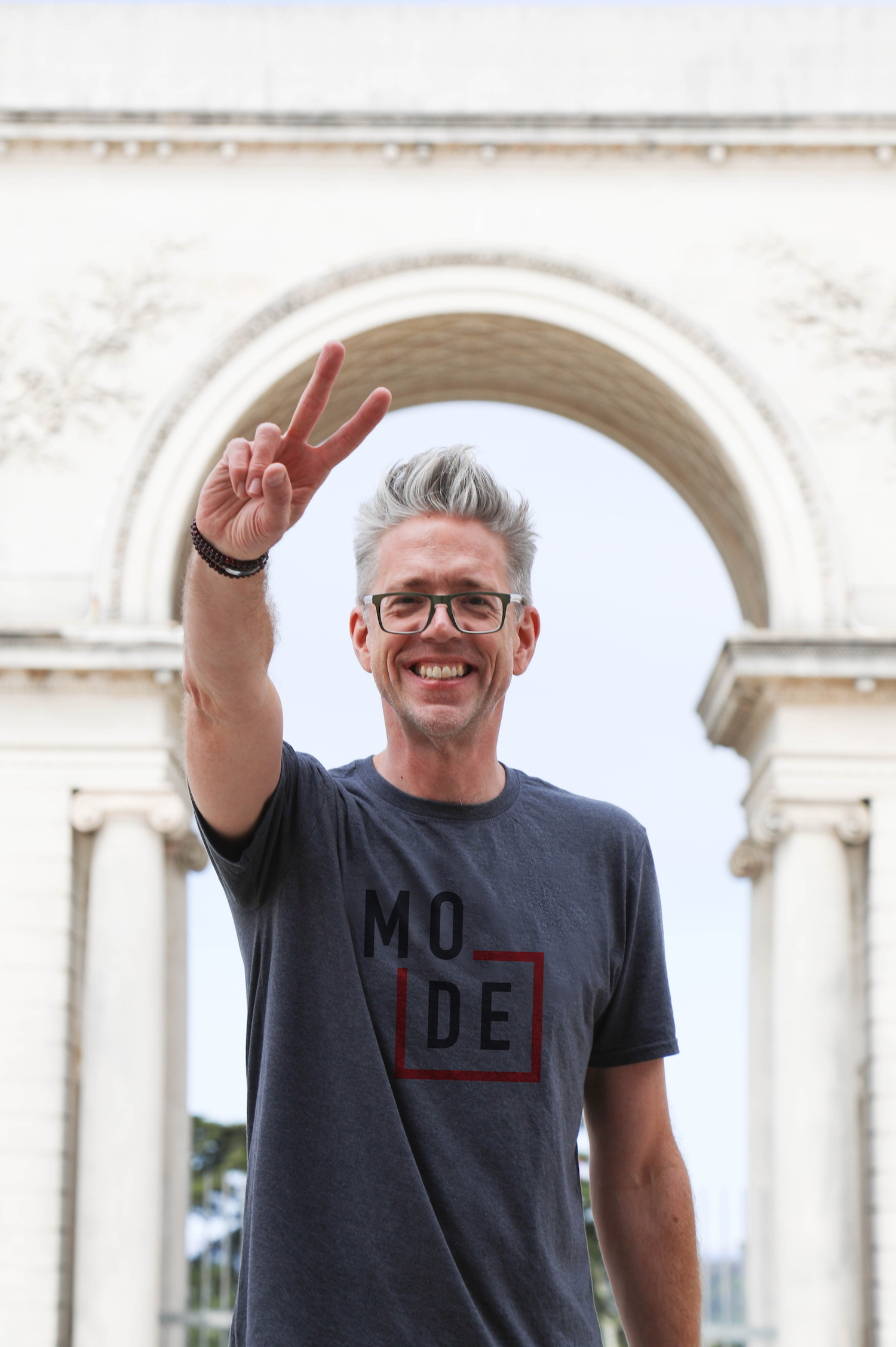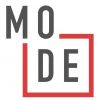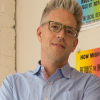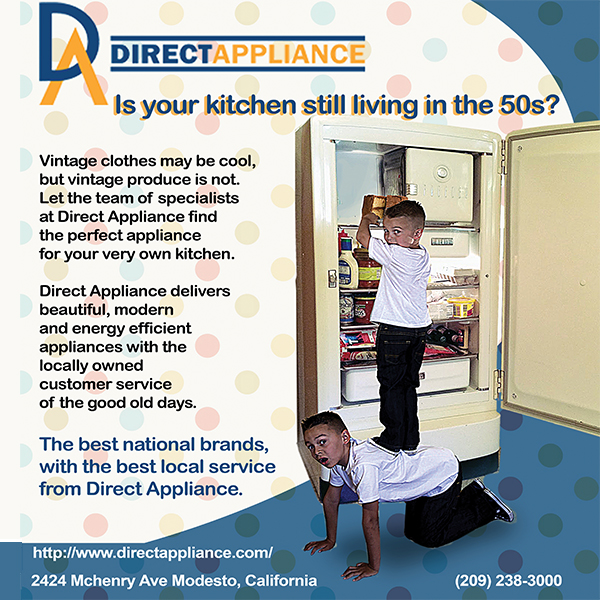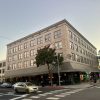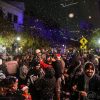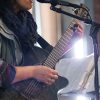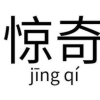InterView
By Chris Murphy
Design with a Mission: Lee Davis
Everything is designed. From the watch on your wrist, the park that you walk in, the chair that you’re sitting in, and the typeface that you’re reading here, someone created and designed them all.
Modesto has a rich and remarkable heritage of design dating back to the mid-1800s. Modesto’s design community is really clicking into gear under the leadership of Lee Davis who recently founded the Modesto Design Collective (MO.DE) and who writes our monthly DesignView article. This week, as we celebrate the 10th annual Modesto Architecture Festival, we’ve asked Lee Davis to reflect on the broader role of design in our city.
Lee Davis brings the concept of “social design” to our community. Social design is an emerging practice focused on bringing the creative process of design to help identify solutions to big social and environmental problems. Lee is co-director of the Center for Social Design at Maryland Institute College of Art (MICA) in Baltimore. He is an author of several titles about social entrepreneurship and was co-founder and CEO of NESsT, an incubator for social businesses. He has a Masters in Public Policy from Johns Hopkins University and a design degree from Connecticut College. Originally from New York, Lee lives in Modesto. Let’s get to know Lee Davis.
ModestoView: People typically think that design only applies to physical things (e.g., buildings, products, etc.). But you see design playing a broader role in our community?
Lee Davis: Yes. Designers do create all of the objects and things we interact with and all of the spaces where we live, work, play and pray. But designers are also rethinking the processes and systems that we are exposed to every day – like the patient experience in a hospital, the customer journey in a supermarket, or the system of support for people experiencing homelessness.
MV: How do you see the concept of social design being applied here in Modesto?
LD: In social design, we use the team “human-centered design” or “design thinking” to describe our process for engaging the people themselves most affected by a problem in finding ways to solve it. I would love to see a city design lab here in Modesto where designers could be engaged in envisioning new approaches, possibilities and opportunities in agriculture, business, government, healthcare, and social services.
MV: In my previous life at Specialized Bicycles, we had a phrase, “who says that good design needs to be expensive?” What are your thoughts on this?
LD: Yes, there’s definitely a common misperception that good design is only for the elite and wealthy. Increasingly corporations like Apple, Ikea and Target are demonstrating the value of bringing good design to the mainstream consumer. But what’s even more exciting now is seeing city governments and social sector organizations embracing design to improve the delivery of social services or to address bigger problems of climate change, education, healthcare, etc. We’re seeing a “democratization” of design happening nationally and internationally.
MV: What inspired you to connect design and social policy?
LD: I started as a pretty traditional graphic designer in a design studio working for clients like Bank of America and Xerox. And while I loved the creative environment, my heart was elsewhere. I first heard of social design when I read Victor Papanek’s seminal book, “Design for the Real World,” that challenged designers to think critically about their role and responsibility in society.
MV: Describe the kinds of things that really inspire you?
LD: My husband is from Brazil and I can say I’ve yet to see any other country on earth more vibrant. The creativity, natural beauty, architecture, and design aesthetic are simply amazing. Often the greatest designs are those that emerge despite the greatest constraints. But specifically in the area of social design, the Center for Urban Pedagogy in Brooklyn, Design Impact in Cincinnati, Greater Good Studio in Chicago, and Liz Ogbu in Oakland, inspire me.
MV: Do you think good design should be so good it is invisible or should it be obvious?
LD: Good design is often both invisible AND obvious. I mean, the best ideas are oftentimes the most simple and the best solutions are usually right in front of our noses. Designers just help us to listen and to see or imagine the invisibly obvious.
MV: How can we create momentum in Modesto for the design leadership you’re advocating through MO.DE?
LD: I’ve been talking a lot lately about our lack of “creative confidence” in Modesto. I think our biggest obstacle is not a lack of talent but a lack of confidence that we COULD be a design capital. We’re currently documenting the rich history and heritage of design in Modesto back to the mid-19th century and it’s amazing what we’re finding. We really do have a design tradition here. We just haven’t captured and celebrated it. And, we’re starting an initiative called Modesto 20/20 to engage designers in imagining the future of our city as we approach our sesquicentennial in 2020. We need to break this cycle of collective low self-esteem here in Modesto. And I think design can help us do that.
MV: How does the city and the county team with the design leaders to make things happen?
LD: One would hope that a city with an architect as a mayor would value design more intentionally. But I think the vision and initiative for design innovation in Modesto will come from the design community itself. We need to educate city and county leadership about the value of design and the potential of design to add value in achieving priority city and county goals. And I’m not talking about designing logos and websites or decorating government office buildings (although we can do that too). I’m talking about design as a partner at the table participating in shaping a collective vision.
MV: What are some of the ways non-designers or the non-artistic can get involved?
LD: About 20% of the 170+ people that came to our kick-off event for MO.DE in June at the Gallo Winery weren’t designers at all. There’s lots of opportunity for “design allies” to get involved. Design is a collective, collaborative, interdisciplinary process. The best and most creative ideas are generated by diverse teams of people with various expertise and backgrounds who co-create together. So we want and need people who represent the rich diversity of our community.
MV: Your team at the Center for Social Design at MICA has been very successful at demonstrating the role of design in social innovation, how can those models apply here?
LD: I’m especially interested to explore how we might replicate some of the elements of our social design post-graduate fellows program at MICA here in Modesto. I’d like to see a Modesto Design Fellowship here that trains and embeds young designers into all types of local institutions and organizations to spark creative and innovative problem solving.
MV: What is your dream to see happen in Modesto?
LD: I have dreams of Modesto as a vibrant design capital with a city design lab downtown that supports local design talent and brings design into all aspects of our community. I’ve been so encouraged by the excitement around MO.DE already, so I don’t think it’s an unrealistic vision. I was so lucky to participate in the New Leadership Network (NLN) organized by Stanislaus Community Foundation this year. The unbelievable community of people I connected with in NLN have been so supportive of my crazy ideas and are holding me accountable that this is going to happen. Soon.
MV: What is the key obstacle to achieving this vision?
LD: There’s no infrastructure here (yet) to support these ideas so we’re endeavoring to build it. The vision is there. It’s just time and money. Mostly money. And time. And money.
MV: What is your favorite thing about living in Modesto?
LD: First and foremost is the amazing community of friends Daniel and I have here. And then there’s the weather. None of my east coast family and friends can pick figs, citrus, herbs or roses in their yard 365 days of the year.
MV: Our signature question – Beatles or Stones?
LD: That’s a dangerous question for me, being married to a musician. But I have to say The Beatles. Ringo Starr and I have the same birthday.
For more information on the Modesto Design Collective, visit: www.modestodesign.org


